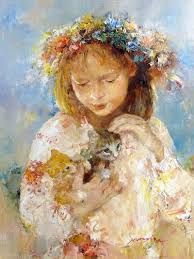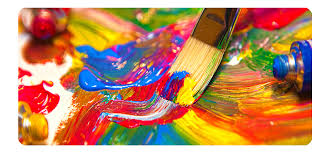Monthly Archives: May 2018
VITEBSK ART SCHOOL (part 3)
 The circle of sources covering this time in the biography of the master is mainly identified and studied, therefore all sorts of new information and facts are so rare and valuable. Vitebsk teacher Valentin Karlovich Seilert in the late 1910s visited Pan, and in 1920-1922. studied in Witsvomas with K. Malevich. In his memoirs, he cites an interesting episode dating back to 1919. “Once I once came to Yuri Moiseevich. He had none of his students at that time. I went straight to him in his personal little workshop. I went there, and there they sat on the sofa, Yuri Moiseevich sat, and there was Chagall. Chagall in the corner near the window set his canvas. And then they sat, therefore, and discussed, because Chagall listened to Pan’s opinion, just like a diligent student, with respect to his teacher. But despite this, he, of course, continued his line of behavior. Continue reading
The circle of sources covering this time in the biography of the master is mainly identified and studied, therefore all sorts of new information and facts are so rare and valuable. Vitebsk teacher Valentin Karlovich Seilert in the late 1910s visited Pan, and in 1920-1922. studied in Witsvomas with K. Malevich. In his memoirs, he cites an interesting episode dating back to 1919. “Once I once came to Yuri Moiseevich. He had none of his students at that time. I went straight to him in his personal little workshop. I went there, and there they sat on the sofa, Yuri Moiseevich sat, and there was Chagall. Chagall in the corner near the window set his canvas. And then they sat, therefore, and discussed, because Chagall listened to Pan’s opinion, just like a diligent student, with respect to his teacher. But despite this, he, of course, continued his line of behavior. Continue reading
VITEBSK ART SCHOOL (part 2)
 Having learned the lessons of new European art and declaring himself to be a rapidly maturing master, M. Chagall returned to Vitebsk on the eve of the First World War. In fact, in less than a decade, from an unknown student of a provincial artist, he grows into one of the leading masters of the emerging avant-garde. And this is not surprising if you pay attention to how easily and organically he created his original art system, attracting childishly naive imagination and romantic metaphor, intrepidly departing from realism and ahead of the masters of Western Europe, whose evolution indicates the intense efforts made to free oneself from the tenacious embrace of the artistic tradition. Continue reading
Having learned the lessons of new European art and declaring himself to be a rapidly maturing master, M. Chagall returned to Vitebsk on the eve of the First World War. In fact, in less than a decade, from an unknown student of a provincial artist, he grows into one of the leading masters of the emerging avant-garde. And this is not surprising if you pay attention to how easily and organically he created his original art system, attracting childishly naive imagination and romantic metaphor, intrepidly departing from realism and ahead of the masters of Western Europe, whose evolution indicates the intense efforts made to free oneself from the tenacious embrace of the artistic tradition. Continue reading




